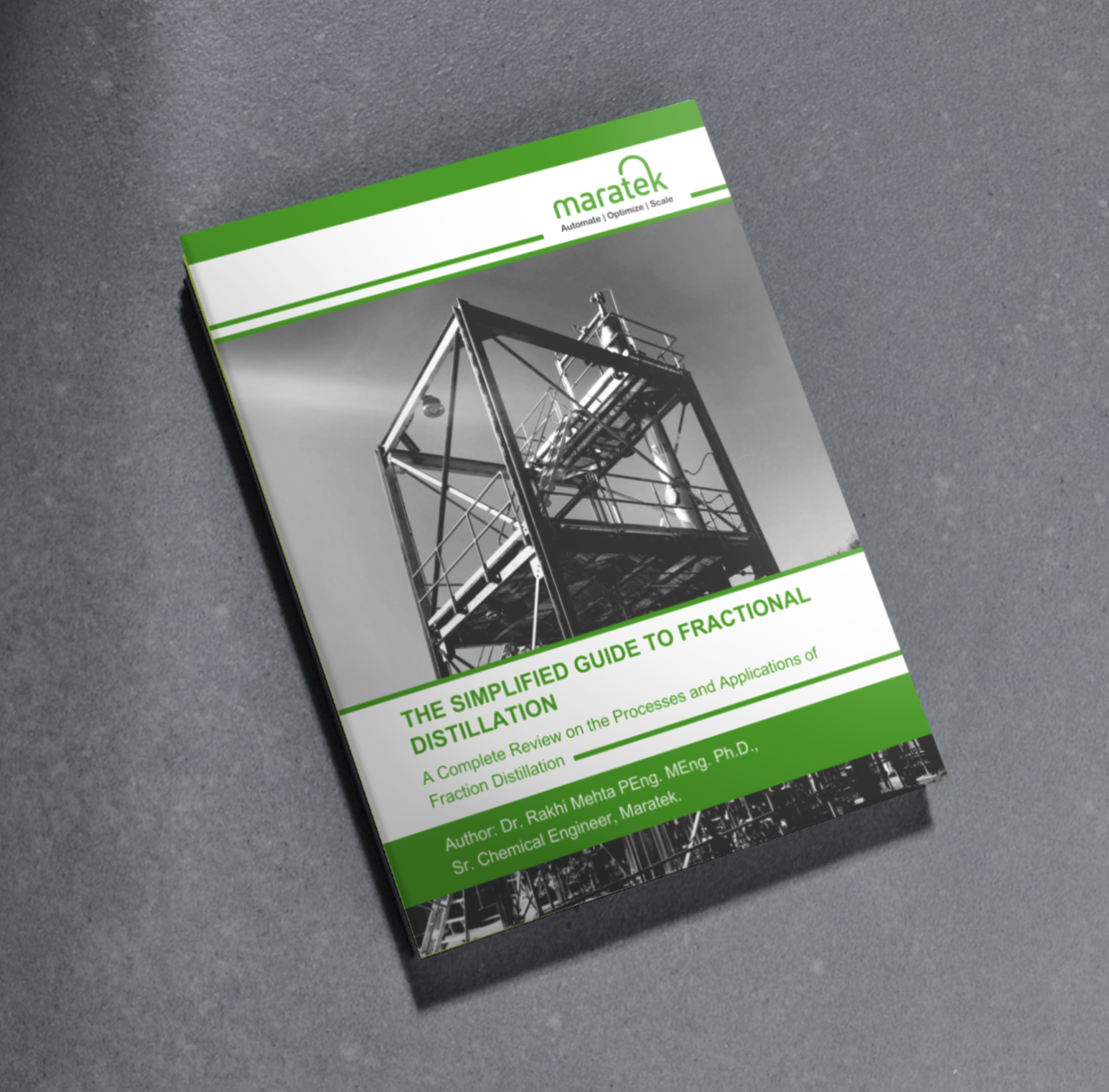Fractional Distillation: Advancing Solvent Recovery with Maratek Technology

Fractional distillation is one of the most effective methods for recovering valuable solvents from complex waste streams. Unlike single-stage distillation, which is best suited for separating liquids with widely different boiling points, fractional distillation excels when the boiling points of components are close together or when multiple volatile compounds are present in the mixture.
At Maratek, we design and manufacture custom fractional distillation equipment that helps industries worldwide recover solvents more efficiently, reduce waste, and improve sustainability. In this article, we’ll explore the principles behind fractional distillation, the key operating parameters, and the many ways it is applied across industries.
The Principles of Fractional Distillation
The foundation of fractional distillation lies in relative volatility. When a liquid mixture is heated, components with lower boiling points (higher volatility) transition into vapor, while higher boiling point components remain in the liquid phase. By maintaining equilibrium conditions, distillation separates these components into distinct fractions.
A fractional distillation column is divided into three primary sections:
- Rectification (Enrichment) Section – Above the feed stage, this section removes the more volatile components as rising vapor interacts with descending liquid. These purified vapors are condensed and collected as distillate.
- Stripping (Exhausting) Section – Below the feed stage, this section separates more volatile substances from the descending liquid through vapor contact.
- Feed or Flashing Section – At the column’s midpoint, where the feed enters and partially vaporizes (“flashes”), setting up the separation process.
Temperature and Pressure Profiles
Two critical parameters govern the efficiency of fractional distillation: temperature and pressure.
- Temperature Profile – Temperatures increase from the top of the column to the bottom. Heat is added at the base (via a reboiler) and removed at the top (via a condenser). Fine-tuning this balance ensures optimal separation of heavy and light fractions.
- Pressure Profile – A pressure gradient exists across the column, with higher pressure at the bottom and lower pressure at the top. Pressure control is vital for maintaining steady-state conditions and desired product composition.
In many solvent recovery applications, vacuum distillation is used to lower boiling points. By reducing column pressure to 150–200 Torr, boiling points can drop by 30–40%. This is especially beneficial when dealing with:
- Solvents with high boiling points
- Solvents with auto-ignition points close to their boiling point
- Contaminants that degrade at high temperatures
Applications of Fractional Distillation
Fractional distillation is used in industries around the globe for its versatility, precision, and efficiency.
- Water Purification & Desalination – Separating salt from seawater to produce safe drinking water. With rising global demand, fractional distillation’s high throughput capabilities make it indispensable.
- Ethanol Purification – Removing water from ethanol, which is used in products such as hand sanitizers, beverages, perfumes, and pharmaceuticals. Purity is critical for performance and consumer safety.
- N-Methyl-2-Pyrrolidone (NMP) Recovery – Used in battery manufacturing, NMP recovered through fractional distillation improves battery life, power, and durability.
- Chemical & Industrial Solvent Recycling – Recovery of solvents used in coatings, paints, adhesives, and specialty chemicals, reducing both costs and environmental impact.
Why Choose Fractional Distillation for Solvent Recovery?
Fractional distillation offers three major benefits compared to simple distillation:
- Efficiency – Capable of separating compounds with very close boiling points.
- Scalability – Maratek systems can be designed for throughputs ranging from 1 gallon/hour to 500 gallons/hour, depending on customer needs.
- Customization – Each system can be engineered with unique features to handle specific waste streams, integrate advanced controls, and maximize energy efficiency.
The result: lower operating costs, higher recovery rates, and improved sustainability for industrial processes.
Maratek: Experts in Custom Fractional Distillation Systems
Fractional distillation is a technically complex process, but with the right design and engineering, it can deliver exceptional results. At Maratek, our engineers specialize in tailored solvent recovery systems that align with each client’s waste stream and operational goals.
Whether you’re looking to purify solvents like ethanol or NMP, reduce costs in chemical manufacturing, or meet sustainability targets in large-scale industrial operations, Maratek has the expertise and technology to help.
Contact our team today to learn how a custom-built fractional distillation system can optimize your solvent recovery process and improve your return on investment.





